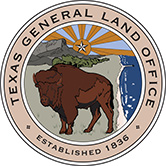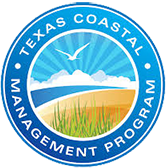Goals
The coastal monitoring program has three major goals:
- Provide students with an inquiry-based learning experience.
Students make several field trips to their study sites during the school year. Working in teams, they conduct topographic surveys (beach profiles) of the foredune and beach, map the vegetation line and shoreline, collect sediment samples, and observe weather and wave conditions. Back in the classroom, students analyze their data and look for relationships among the observed phenomena. Bureau scientists provide background information and guide inquiries about the data, but students are encouraged to form and test their own hypotheses. Through their collaboration with working scientists on an actual research project, the students gain an enhanced science education.
- Increase public awareness and understanding of coastal processes and hazards.
All data collected by the students and analyses made by Bureau scientists are publicly available for use by coastal managers, scientists, decision-makers, and the general public. The THSCMP website containing the latest data, analysis, photos, and educational resources is central to the project’s community outreach aspect. Further aspects of the program conducted to improve public awareness include presentations at conferences by Bureau scientists, student presentations and data-collection demonstrations at community outreach events, the annual report, and scientific journal articles.
- Achieve a better understanding of the relationship between coastal processes, beach morphology, and shoreline change, and make data and findings available for solving coastal management problems.
The Bureau has conducted over 40-years of research monitoring shorelines and investigating coastal processes. An important part of this research is repeated shoreline mapping and beach profile measuring. Over time, these data are used to determine the rate of shoreline change. A problem we face is the limited temporal resolution of our shoreline data. The beach is a dynamic environment where significant changes in shape and sand volume can occur over periods of days or even hours. Tides, storms, and seasonal wind patterns cause large, periodic or quasiperiodic changes in the shape of the beach. If coastal data are not collected often enough, periodic variations in beach morphology could be misinterpreted as secular changes. The THSCMP helps address this problem by providing scientific data at key locations along the Texas coast. These data are integrated into the ongoing coastal research program at the Bureau and are made available to other researchers and coastal managers.



.png)